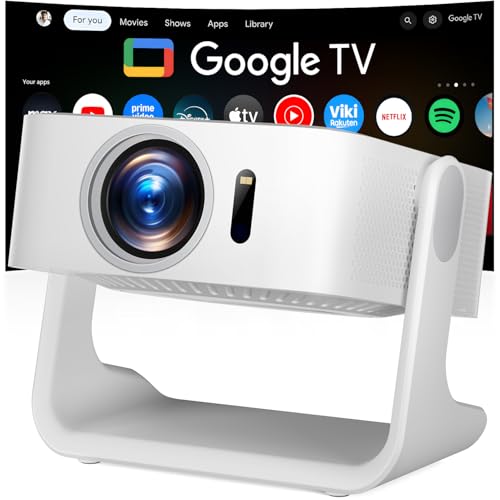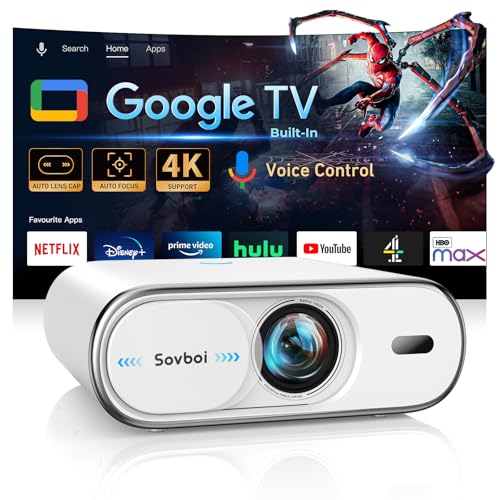- Introduction.
- Understanding Your Space.
- Projector Types.
- Resolution and Image Quality.
- Brightness and Light Output.
- Throw Distance and Screen Size.
- Connectivity Options.
- Budget Considerations.
- Conclusion.
- Shop Now.

Introduction

Amazon Prime Big Deal Days is back on October 7–8, offering Prime members exclusive access to massive discounts on millions of items across categories like electronics, fashion, home essentials, and more. It’s the perfect chance to grab early holiday deals, save big on top brands, and enjoy fast, free shipping with your Prime membership. Join Prime here (#ad) and enjoy discounts on Home Projector.
Creating an immersive home theater experience hinges on selecting the right home projector. A well-chosen projector can transform your living space into a cinematic haven, offering superior image quality and a true theater-like ambiance. Whether you’re a movie enthusiast, a gaming aficionado, or someone who enjoys the occasional TV show, the benefits of an optimal projector setup are undeniable.
The importance of choosing the right projector cannot be overstated. With a myriad of options available, each with varying features and specifications, making the right choice can be daunting. However, understanding the key factors to consider can streamline this process, ensuring that your investment yields the best possible viewing experience.
In this blog post, we will delve into the essential aspects of selecting a projector for your home theater. We will explore the significance of resolution and brightness, the impact of contrast ratio, and the importance of throw distance and screen size compatibility. Additionally, we will discuss the different types of projectors available, including LCD, DLP, and LED, and their respective advantages and disadvantages.
As you embark on the journey to find the perfect projector, remember that the right choice can elevate your entertainment experience, bringing movies, games, and shows to life with stunning clarity and vivid colors. Let’s delve into the factors that will help you choose the best projector for your home theater.
Understanding Your Space
When selecting a projector for your home theater, it is essential to evaluate the room where it will be used. The size of the room plays a critical role in determining the type of projector you should choose. Larger rooms may require projectors with higher lumens to ensure a bright and clear image across a more significant distance. Conversely, smaller spaces might benefit from short-throw or ultra-short-throw projectors, which can produce large images from a shorter distance.
Ambient light is another crucial factor to consider. Rooms with high levels of natural light or numerous light sources may necessitate a projector with higher brightness levels. This ensures that the image remains visible and vibrant even in well-lit environments. On the other hand, if you have a dedicated home theater room with controlled lighting, you can opt for projectors with lower lumens, as the darkness will enhance image quality and contrast.
In summary, understanding the specifics of your space is paramount in choosing the right projector for your home theater. By evaluating room size, ambient light, and seating arrangement, you can select a projector that meets your needs and delivers an optimal viewing experience. These factors will guide you in choosing the appropriate projector type and specifications, ensuring your home theater setup is both functional and enjoyable.

Projector Types
When it comes to selecting the right projector for your home theater, understanding the different types available in the market is crucial. The main categories include LCD, DLP, and LCoS projectors, each offering unique advantages and potential drawbacks. Let’s delve into these types to help you determine which might be best suited for your home theater needs.
LCD Projectors: Liquid Crystal Display (LCD) projectors are known for their bright and vibrant images. They utilize liquid crystal panels to display images, making them an excellent choice for well-lit rooms. LCD projectors are often praised for their color accuracy and sharpness. However, they may be susceptible to the “screen door effect,” where the grid of pixels becomes visible. Despite this, their overall performance and affordability make them popular among home theater enthusiasts.
More options.
DLP Projectors: Digital Light Processing (DLP) projectors use a chip made of microscopic mirrors and a spinning color wheel to project images. DLP projectors are renowned for producing high-quality images with deep blacks and excellent contrast, making them ideal for dark room settings. They are also less prone to motion blur, making them a good option for action-packed movies or sports events. However, some users might notice the “rainbow effect,” a brief flash of colors, which can be distracting to some viewers.
LCoS Projectors: Liquid Crystal on Silicon (LCoS) projectors combine elements of both LCD and DLP technologies. They are celebrated for their superior image quality, offering high resolution, excellent color accuracy, and deep contrast levels. As a result, LCoS projectors tend to be on the pricier side. They are best suited for those who prioritize image quality over cost and have a controlled lighting environment to maximize their performance.
Understanding the strengths and weaknesses of each projector type is essential in making an informed decision. Whether you prioritize brightness, contrast, color accuracy, or overall picture quality, there is a projector type that aligns with your specific home theater requirements.
Resolution and Image Quality
When selecting a projector for your home theater, one of the most critical factors to consider is the resolution. The resolution of a projector directly affects the clarity and sharpness of the images it produces. Common resolutions include 1080p (Full HD) and 4K (Ultra HD). A 1080p resolution offers a significant improvement over standard definition, making it a popular choice for many home theaters. It provides clear and detailed images suitable for most viewing experiences.
However, for those seeking the highest level of detail and immersion, a 4K projector is the optimal choice. With four times the pixel count of 1080p, 4K projectors deliver exceptionally sharp images with incredible detail, making them ideal for large screen sizes and high-definition content. This higher resolution is particularly beneficial for viewing movies and sports, where every detail enhances the overall experience.
Beyond resolution, other factors significantly impact image quality. A high contrast ratio contributes to deeper blacks, brighter whites, and a more dynamic range of colors, resulting in a more vibrant and lifelike image.
Color accuracy is another essential consideration. A projector with poor color accuracy can display colors that look washed out or unnatural. To ensure true-to-life colors, look for projectors that support color standards such as Rec. 709 or DCI-P3. These standards ensure that the projector can reproduce colors accurately, providing a more immersive and authentic viewing experience.
In summary, while resolution is a key factor in determining the sharpness and clarity of the image, other elements like contrast ratio and color accuracy are equally important. By carefully considering these aspects, you can select a projector that delivers exceptional image quality, enhancing your home theater experience.

Brightness and Light Output – Home Projector
When choosing the right projector for your home theater, understanding the importance of brightness, measured in lumens, is crucial. Brightness directly impacts the quality of the projected image, particularly in environments with varying levels of ambient light. Lumens quantify the amount of light a projector can produce, and selecting an appropriate lumen range ensures that your viewing experience remains optimal under different lighting conditions.
In a home theater setting, the level of ambient light significantly influences the needed brightness. For rooms with controlled lighting, such as basements or spaces with blackout curtains, a projector with lower lumens can suffice. Typically, a projector with 1,500 to 2,500 lumens is adequate for these darker environments, providing clear, vibrant images without the need for excessive brightness. This range ensures that the colors and details in your movies or shows are displayed accurately, enhancing the overall viewing experience.
Conversely, if your home theater is situated in a room with higher ambient light, a projector with increased brightness is necessary to combat the light interference. For living rooms or multi-purpose spaces with windows or minimal light control, opting for a projector with 2,500 to 4,000 lumens is advisable. This higher lumen count helps maintain image clarity and visibility, preventing washed-out scenes and ensuring the content remains engaging and enjoyable even during daytime viewing.
Ultimately, selecting the right projector brightness is a balance between your specific home theater environment and the intended usage. For a versatile solution that accommodates various lighting conditions, consider projectors with adjustable brightness settings or those designed for both high and low light environments. By carefully evaluating the lumen requirements based on your room’s ambient light level, you can make an informed decision that enhances your home theater experience to its fullest potential.
Throw Distance and Screen Size
Throw distance is a crucial factor in determining the placement of a projector within your home theater setup. It refers to the distance between the projector lens and the screen, which directly impacts the size and clarity of the projected image. Understanding throw distance is essential for achieving the optimal viewing experience, as it ensures the image fits perfectly within the screen’s dimensions without distortion or loss of quality.
To calculate the appropriate throw distance for your projector, you need to consider the projector’s throw ratio. The throw ratio is a specification provided by the manufacturer, expressed as the ratio of the distance from the lens to the screen (throw distance) to the width of the projected image.
To simplify this process, many projector manufacturers offer online throw distance calculators. These tools allow you to input specific details such as room dimensions, desired screen size, and projector model to determine the ideal placement. Additionally, these calculators can help you account for other variables such as zoom capabilities and lens shift, providing a comprehensive solution for your setup.
When determining screen size, it is also important to consider the viewing distance from the screen. A general rule of thumb is to sit at a distance that is 1.5 to 2.5 times the diagonal size of the screen. For example, if your screen is 100 inches diagonally, seating should be between 12.5 and 20.8 feet away. This ensures that viewers can enjoy a clear and immersive experience without straining their eyes.
By carefully calculating throw distance and screen size, and utilizing online tools, you can ensure that your projector is ideally placed, providing a superior viewing experience tailored to your home theater environment.
Connectivity Options – Home Projector.
When selecting a projector for your home theater, one of the crucial factors to consider is its connectivity options. Modern projectors come with a variety of interfaces that ensure seamless integration with your media sources. The most common and essential connectivity option is HDMI. HDMI ports are vital for connecting high-definition devices such as Blu-ray players, gaming consoles, and streaming devices. An HDMI connection ensures superior audio and video quality, making it a staple feature in any high-end projector.
USB ports are another important connectivity option to look for. They allow you to connect various devices such as flash drives, external hard drives, and even some streaming sticks. This can be particularly useful for directly playing media files stored on these devices without needing a separate playback device. Additionally, some projectors support USB-C, which is becoming increasingly popular due to its versatility and ability to deliver power and data simultaneously.
Wireless connectivity is also a game-changer in modern projectors. Wi-Fi and Bluetooth capabilities enable you to stream content directly from your smartphone, tablet, or laptop without the need for physical cables. This can significantly reduce clutter and provide a more streamlined setup. Many projectors are compatible with popular streaming devices like Chromecast, Roku, and Amazon Fire Stick, offering easy access to your favorite streaming services.
Ensuring your projector has the right connectivity options is critical for a seamless home theater experience. A well-equipped projector should have multiple HDMI ports, USB inputs, and wireless capabilities to accommodate all your media sources. This versatility not only enhances the functionality of your projector but also ensures it can adapt to future technological advancements and changes in your media consumption habits.
Budget Considerations – Home Projector.
Setting a budget for your home theater projector is a crucial first step in the selection process. Determining how much you are willing to spend can significantly narrow down your options and ensure you get the best value for your money. When considering your budget, it’s essential to strike a balance between cost and features. Generally, the more you invest, the better the quality and features you can expect. However, it’s important to prioritize what features are most important to you based on your personal preferences and viewing habits.
Home theater projectors can be broadly categorized into three budget ranges: entry-level, mid-range, and high-end.
Entry-Level Projectors: Typically priced under $500, entry-level projectors are great for those new to home theater setups or those on a tight budget. These projectors usually offer decent picture quality and basic features such as manual focus and keystone correction. While they may not provide the highest resolution or the most vibrant colors, they are adequate for casual viewing and smaller rooms.
More options.
Mid-Range Projectors: Falling between $500 and $1500, mid-range projectors offer a significant step up in terms of performance and features. In this category, you can expect better resolution (Full HD or even 4K), higher brightness levels, and improved color accuracy. Features such as lens shift, zoom capabilities, and enhanced connectivity options are often available, making these projectors suitable for more serious home theater enthusiasts.
High-End Projectors: For those willing to spend over $1500, high-end projectors provide the best in image quality and advanced features. These projectors are designed for dedicated home theaters and large screens. Expect top-tier resolution (4K or higher), exceptional brightness, superior contrast ratios, and advanced image processing technologies. Additional features may include motorized lens adjustments, extensive connectivity options, and compatibility with the latest HDR formats.
Ultimately, your budget should reflect your priorities and how you intend to use the projector. By carefully considering the balance between cost and features, you can find a projector that meets your needs without overspending.
Conclusion – Home Projector.
Choosing the right projector for your home theater setup is a multifaceted process that requires careful consideration of several key factors. First and foremost, evaluating the available space is crucial, as it will influence the type of projector and its optimal placement. There are different types of projectors, each suited to specific needs; understanding whether a DLP, LCD, or LCoS projector aligns with your requirements is essential.
Resolution and brightness are also critical factors. Higher resolution projectors, such as 4K models, offer superior image quality, while the appropriate brightness level ensures clear viewing even in less-than-ideal lighting conditions. Additionally, throw distance—the distance between the projector and the screen—must be assessed to achieve the desired image size and clarity.
Connectivity options should not be overlooked, as modern home theater systems often require multiple input sources. Ensuring that the projector has the necessary ports and wireless capabilities can save future hassle. Lastly, budgeting for your projector is a balancing act between desired features and cost. While it might be tempting to opt for a lower-priced option, investing in a quality projector can enhance your viewing experience significantly.
In summary, selecting the right projector involves a thorough examination of space, type, resolution, brightness, throw distance, connectivity, and budget. Taking the time to research and understand these elements can lead to a more informed decision, ensuring that your home theater setup provides an immersive and enjoyable viewing experience. We encourage you to delve deeper into each factor, compare different models, and choose a projector that best suits your specific needs and preferences.
Also read about,
- Transform Entertainment with ZEBRONICS Projectors.
- Choosing the Right Projector for Home Entertainment.
- Cash Back Programs to Get Money Back on Your Purchases
- Redmi 12C: A Powerful and Feature-Packed Smartphone
- Online Shopping Deals and Discounts: Your Guide to Daily Updates
- Security Cameras – The Benefits of Security Cameras for Home
![[Latest Upgrade] 4500Lumens Mini Projector, Full HD 1080P 170" Di...](https://m.media-amazon.com/images/I/51WzTnjo17L.jpg)









![[1500 ANSI/Auto Focus/Built-in APPs] Outdoor-Projector-4K with Wi...](https://m.media-amazon.com/images/I/51Ml3AEQzhL.jpg)
$1 Holiday Deals here – https://dealhunterfinds.systeme.io/deal-hunter-finds